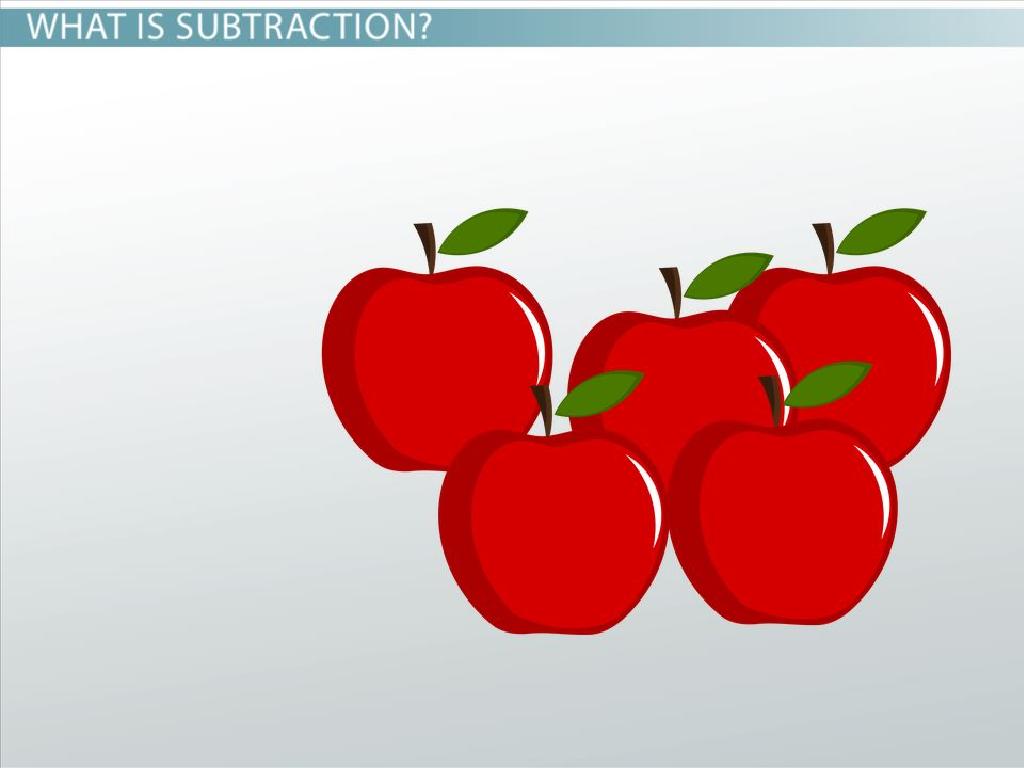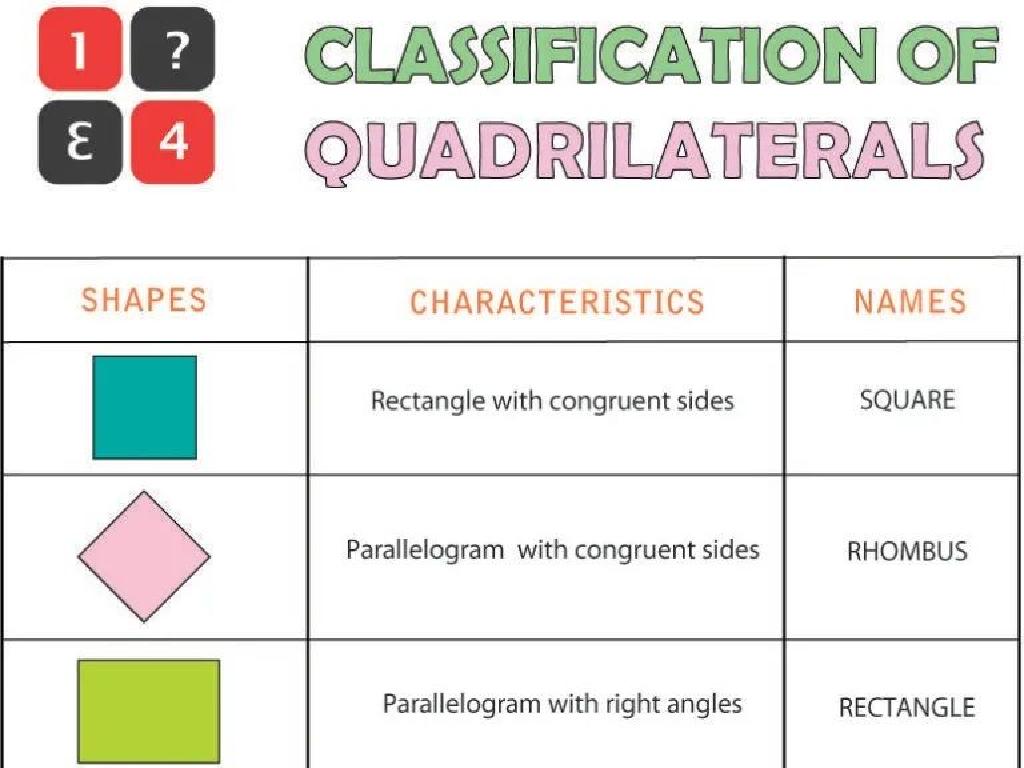Simple Interest
Subject: Math
Grade: Eighth grade
Topic: Consumer Math
Please LOG IN to download the presentation. Access is available to registered users only.
View More Content
Understanding Simple Interest
– Introduction to Consumer Math
– Definition of Simple Interest
– Simple Interest is calculated as a percentage of the principal amount, e.g., interest on savings.
– Real-life applications of Simple Interest
– Used in bank accounts, loans, investments, and more.
– Significance of learning Simple Interest
– Helps in making informed financial decisions and understanding loan costs.
|
This slide introduces the concept of Simple Interest within the broader topic of Consumer Math, which is a practical area of mathematics that deals with financial transactions in everyday life. Simple Interest is a fundamental concept where interest is calculated only on the principal amount, or the initial sum of money. Understanding Simple Interest is crucial for students as it applies to various real-life scenarios such as savings accounts, loans, and investments. It enables them to calculate the cost of borrowing money or the returns on their savings, thus empowering them to make informed financial decisions. During the lesson, provide examples of calculating Simple Interest and discuss its importance in everyday financial matters.
Understanding Simple Interest
– Define Interest
Interest is the cost of using someone else’s money.
– Simple vs. Compound Interest
Simple interest is calculated on the principal only, while compound interest is calculated on the principal plus any interest earned.
– Real-world Simple Interest
Simple interest is used in loans, savings, and investments.
– Calculating Simple Interest
|
This slide introduces the concept of interest, a fundamental topic in consumer math. Begin by defining interest as the fee paid for borrowing money, which can be thought of as ‘renting’ money. Highlight the difference between simple and compound interest, emphasizing that simple interest is calculated only on the initial amount of money, while compound interest is calculated on the initial amount plus any interest that has been added over time. Discuss real-world applications of simple interest, such as car loans, bank savings accounts, or government bonds, to help students relate the concept to everyday life. Conclude by explaining the formula for calculating simple interest (I = PRT, where I is interest, P is principal, R is the rate of interest per year, and T is time in years) and provide an example calculation. Encourage students to think of scenarios where they might encounter simple interest in their own lives.
Calculating Simple Interest
– Learn the Simple Interest Formula
– I = PRT, where I is interest
– Understand Principal, Rate, Time
– P is the initial amount, R is the rate per year, T is the time in years
– Example: $1000 loan at 5% for 2 years
– What’s the interest for $1000 at 5% annually over 2 years?
– Calculate the interest for the loan
– Use the formula to find the interest: I = $1000 * 5% * 2
|
This slide introduces the concept of simple interest, a crucial part of consumer math. Start by explaining the formula I = PRT, where ‘I’ stands for the interest earned over a certain period, ‘P’ is the principal or the initial amount of money, ‘R’ is the annual interest rate, and ‘T’ is the time the money is invested or borrowed for in years. Provide a clear example with a $1000 loan at a 5% annual rate over 2 years to illustrate the concept. Walk the students through the calculation step by step, ensuring they understand how each variable affects the total interest. Encourage students to practice with different numbers to solidify their understanding.
Simple Interest Practice Problems
– Calculate interest on $500 at 3% for 1 year
– Use formula I = PRT, where P=$500, R=3%, T=1
– Find principal from $60 interest at 4% for 3 years
– Rearrange formula P = I / (RT), where I=$60, R=4%, T=3
|
This slide provides students with practice problems to apply their knowledge of simple interest calculations. The first example reinforces the use of the simple interest formula I = PRT (Interest = Principal x Rate x Time), where students will plug in the given values to solve for the interest earned. The second example challenges students to work backwards from the interest earned to find the original amount of money, or principal, that was loaned or invested. This requires rearranging the formula to solve for P. Encourage students to show their work step by step and to check their answers by plugging the principal back into the original formula to ensure it results in the given interest amount. Provide additional similar problems for students to practice and gain confidence in solving simple interest problems.
The Impact of Time and Rate on Simple Interest
– Time’s role in interest accrual
More time means more interest accumulates.
– Rate of interest’s effect
Higher rates increase the interest faster.
– Interactive example: time & rate adjustments
Use sliders to change time and rate, see the interest result.
– Observing interest amount changes
|
This slide aims to help students understand how the duration (time) and the percentage (rate) of interest can significantly affect the total amount of interest accrued on a principal amount. Emphasize that the longer the time money is invested or borrowed, the more interest it will accumulate. Similarly, a higher interest rate will result in a greater amount of interest over the same period. The interactive example should involve an activity where students can manipulate the time and rate variables in a simple interest formula to see how these factors influence the final amount of interest. This will provide a hands-on learning experience that reinforces the concepts taught. Encourage students to hypothesize the outcome before adjusting the sliders and to reflect on the results after.
Real-Life Applications of Simple Interest
– Simple interest in savings
– Earn interest on your bank savings over time.
– Calculating loan interest
– Determine the cost of borrowing money.
– Role in budgeting
– Essential for creating a financial plan.
– Planning with simple interest
– Anticipate future expenses and savings growth.
|
This slide aims to show students how simple interest is not just a mathematical concept but a practical tool used in everyday life. When money is saved in a bank account, the bank pays interest over time, calculated using simple interest. Similarly, when taking out a loan, the interest charged on the borrowed amount is often calculated using simple interest. Understanding how to calculate simple interest is crucial for effective budgeting and financial planning. It allows individuals to estimate future savings growth and the cost of loans, helping them make informed decisions about their finances. Encourage students to think of scenarios where they might need to calculate simple interest and discuss the impact of different interest rates on savings and loans.
Class Activity: Simple Interest Scenarios
– Pair up for interest problems
– Scenario 1: Car loan interest
– Use the formula I = PRT to find interest on a car loan
– Scenario 2: Student loan repayment
– Find the total repayment using A = P(1 + RT)
– Discuss solutions with class
|
This activity is designed to apply the concept of simple interest to real-world scenarios, enhancing students’ understanding of consumer math. Students will work in pairs to foster collaboration and problem-solving skills. For Scenario 1, they will calculate the interest on a car loan given the principal, rate, and time, using the formula I = PRT, where I is the interest, P is the principal amount, R is the rate of interest per year, and T is the time in years. Scenario 2 involves determining the total amount repaid on a student loan, which includes both the principal and the interest over time, using the formula A = P(1 + RT). After solving the problems, pairs will discuss their solutions with the class, allowing for a variety of approaches and a deeper understanding of simple interest calculations. Provide guidance and ensure that each pair understands the formulas and how to apply them.
Wrapping Up: Simple Interest
– Recap: What is Simple Interest?
– Simple Interest = P x R x T (Principal, Rate, Time)
– Its role in everyday finances
– Understand how it affects savings and loans
– Open floor for questions
– Encourage daily life application
– Think about savings accounts or family loans
|
As we conclude today’s lesson on Simple Interest, it’s important to review the key formula: Simple Interest = Principal x Rate x Time. Emphasize the practicality of this concept in personal finance, such as how interest is calculated on savings accounts or loans. Open the floor for any lingering questions to ensure clarity and understanding. Finally, encourage students to apply this knowledge to real-life scenarios they may encounter, such as managing their own savings or understanding the terms of a loan. This will help solidify their understanding and show the relevance of math in their daily lives.






